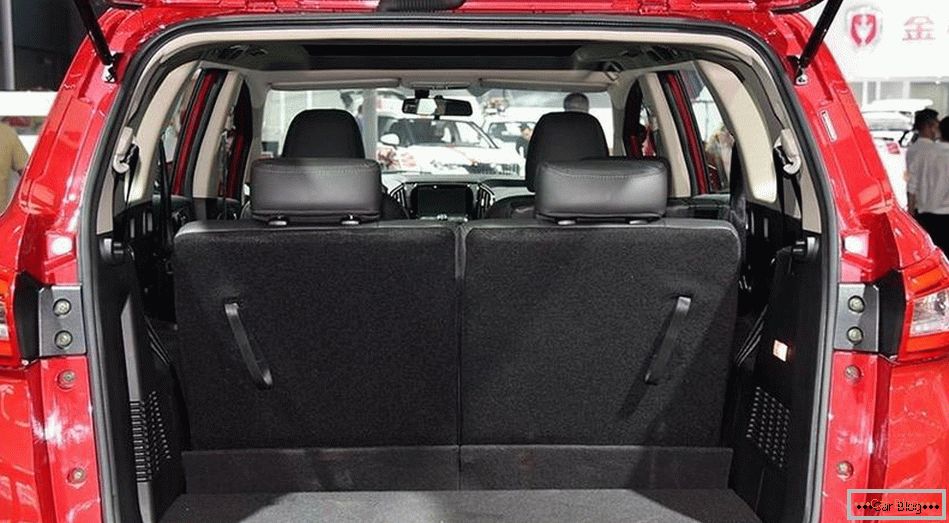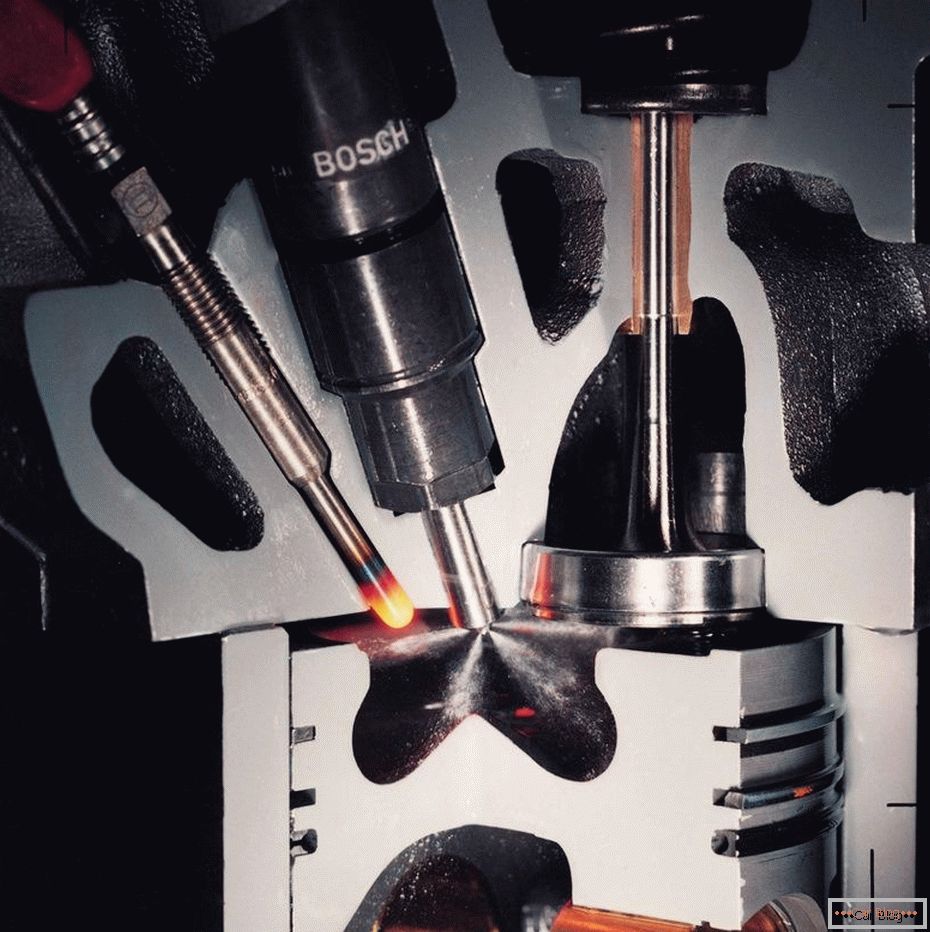When buying a new car, the driver is given a special service book. As a rule, such a document contains detailed information about how much brake fluid is needed for replacement and after what specific time period it is recommended to replace it. But despite all this, some drivers ignore the recommendations prescribed by the developer, while others carry out this procedure less often or often, which in both cases leads to a number of troubles.
Content
- 1 What is brake fluid?
- 2 Types of brake fluids
- 3 Is it possible to mix?
- 4 Basic properties of brake fluid
- 5 When should I replace?
- 6 Quantity of brake fluid to replace
- 7 Stages of work
- 8 What kind of brake fluid to choose?
What is brake fluid?
Automotive brake fluid is one of the most important components of the entire car brake system. It is necessary for the stable operation of the hydraulic drive, which provides an instantaneous transfer of force to the braking components. These devices are installed on the wheels of modern cars. Brake fluid can be compared with electrical wires, only in our case, the fluid conducts pressure, not current. If for the manufacture of wires using certain materials, here for a good pressure conductivity take a substance with certain properties that are ideally compatible with this machine.
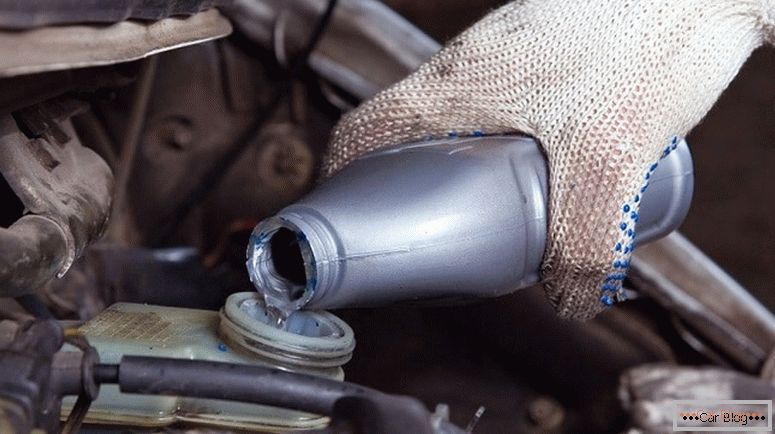
Brake fluid inlet
You should know that if such a liquid does not fulfill its main purpose at a very important moment - this will lead to serious accidents on the roads. To prevent the brake system from pumping up at the right time, you should carefully monitor its condition, even if it does not leak in the brake drive. From the state of TJ depends on the effectiveness of braking, and coherence of the entire site. Remember, the substance for a long time should always remain liquid, do not freeze and do not boil in the operating mode. As you know, during operation, the brake fluid in the cylinders changes its temperature, but the elevated temperature should not be allowed to reach the boiling point, because steam plugs appear because of this. This leads to drive compliance and sharpening of the brakes. This is of particular importance for sports cars with disc brakes.
It must be remembered that correct and timely replacement of brake fluid is the key to safe vehicle movement on the road.
Types of brake fluids
Of great importance is the composition of the substance. Incorrectly chosen chemical components can, to varying degrees, affect the braking system, in particular, distort its components and reduce its efficiency. Previously, the substance consisted of butyl alcohol and castor oil in a ratio of one to one. Such mineral tj are classics.
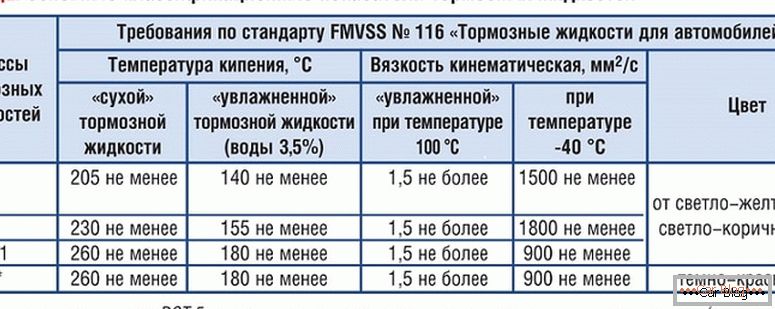
Brake fluid classification
Such liquids had a high hygroscopicity and good lubricating properties, however, they had significant drawbacks - low boiling point and the ability to oxidize some metals created from petroleum products. Therefore, over time, additives have been added to the mineral base to prevent TJ from oxidizing with air and to protect metal parts of hydraulic systems from corrosion. Now the advanced substance includes a base - 93–98% and additional additives that make up only 7–2%. But this type of liquids has not received much distribution, it cannot be used in transport with disc brakes. In particular, a liquid with this composition is used in the offseason when there is no freezing.
Today the most commonly used base is polyglycols or their esters. Sometimes silicones are taken as a basis.
Glycine substance (DOT3, DOT4, DOT5.1) It contains polyethylene glycols and boric acid polyesters. A significant minus is high hygroscopicity, which requires frequent replacement of the substance.
Silicone (DOT 5) used in sports and racing cars. They are based on silicon-organic polymer compounds. The substance does not depend on temperature, does not accumulate moisture in itself and does not spoil the components of the site. Only lubricating functions fail to reach the norm.
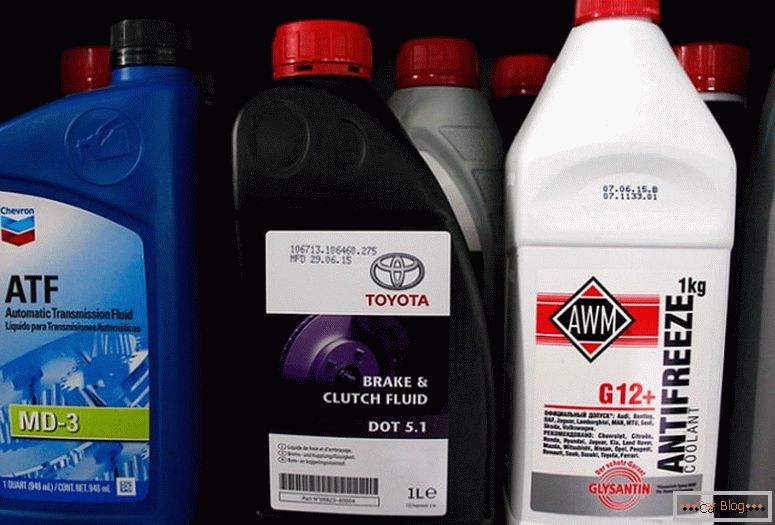
Different brake fluids
Substance consisting of made of glycolic base with added silicone (DOT-5.1 / ABS). It goes only on the vehicle with anti-lock system.
See also: How to lubricate the guides of the brake caliperIs it possible to mix?
It is not recommended to interfere with the glycolic mineral liquids, as this causes swelling of the rubber cuffs of the hydraulic drive and the appearance of clots "castor". Before replacing any liquids, you must first clean the system of residues from the previous brake fluid. Exceptions if the liquids are glycolic, but belong to different classes (DOT 3, DOT 4 and DOT 5.1). Silicone-containing fluids are generally incompatible with any other elements. When mixed, a strong chemical reaction occurs, leading to deformation of the components of the brake system.
Main properties of brake fluid
- Boiling temperature. For a brake system, a high boiling point, because the boiling substance is bubbling and will not form a vapor stop. When the temperature is below normal - pushing the pedal and the absence of braking occurs. Such a situation arises during intensive braking, the heat generated by friction does not have time to leave the system, and the overall temperature in it increases. The average operating temperature of the TZH ranges from –50 (idle when there is a severe frost) to + 150, if driving goes on a mountain road.
- Viscosity. It is characterized as a property of fluid pumped through the brake system. During low temperatures, thickening occurs, the substance is slowly pumped through pipelines, and this delays the braking reaction when it is so necessary. And at high boiling point - excessive viscosity, which increases the likelihood of leaks. The standard viscosity of brake fluid at -40 ° C should not exceed 1800 cSt (mm2 / s).
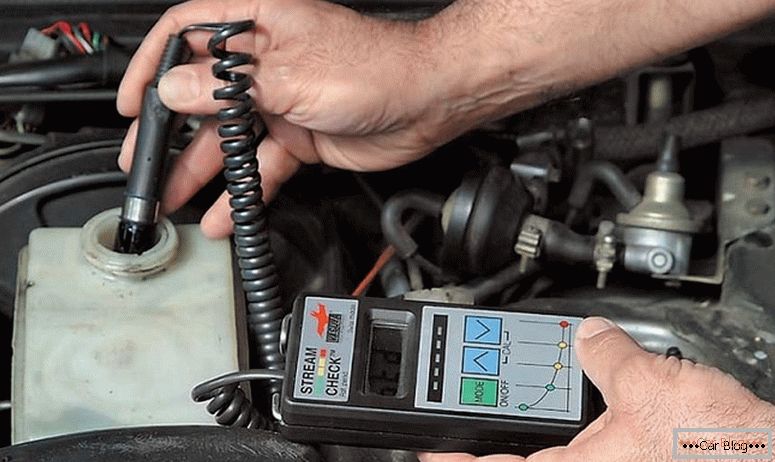
Check the level of brake fluid in the workshop
- Hygroscopicity. So called the ability of the substance to absorb water vapor from the air. A high moisture content leads to a low boiling point.
- Impact on rubber parts. Rubber seals should not shrink, swell, harden and lose strength more than is permitted by the standard.
- Impact on metals. TJ should not corrode the steel components of the system. If the pistons “acid”, the parts wear out quickly, and the liquid begins to flow out of the cylinders.
- Lubricating properties. In order for the cylinders, pistons and cuffs of the system to last longer, brake fluid must perfectly lubricate their working surfaces.
When should I replace?
To maintain a stable boiling point, ranging from 200, up to 260 degrees on the Celsius scale, it is necessary to promptly and correctly replace the TJ. Experts recommend a complete, rather than a partial replacement of fluids 1 time in 2 years, regardless of mileage. The exception is DOT 5.1, it needs to be changed annually. This is due to the hygroscopicity of TJ. It is known that in a year a substance accumulates in itself 2-3% of water extracted from the environment. Because of this, the boiling point decreases by 30–50ºC.
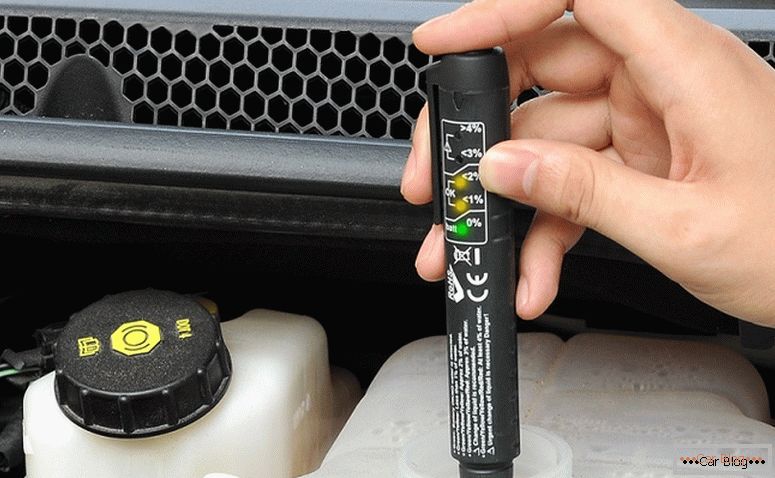
The device for measuring the level of brake fluid
Be aware: even a minimal percentage of moisture can dramatically lower the boiling point to 145 ºC. This effect can lead to the first signs of the process of steam lock brakes.
If you look at the recommendations of the manufacturers, then for individual brands the individual frequency of replacement of this fluid is established. On average, the replacement period for TJ is from 2 to 3 years (or every 60 thousand kilos.). There are several obvious signs indicating the need to replace it:
- change of color scale;
- loss of transparency of the substance;
- changes in the chemical composition (in cases where the mixture has absorbed a lot of excess impurities).
It is also worth noting one rather interesting fact: it is extremely difficult to carry out a thorough diagnosis of the substance, since this mixture has different properties. This is explained by the fact that inside the tank it is equal to some indicators, and in the car system itself during the process of work - quite different. For owners of more expensive cars, it is recommended to replace the substance more often.
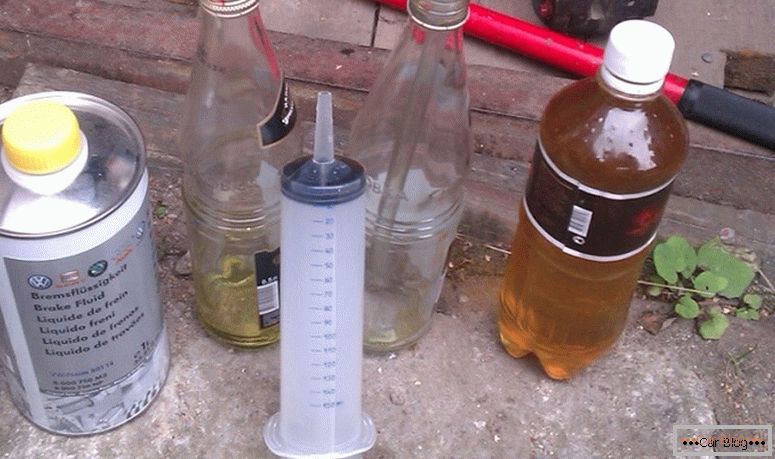
Replacement Tools
The need for such a process may arise:
- during diagnostics and further repair of the entire system;
- after 2 or 3 years of active machine operation;
- in cases where too much moisture is present in this mixture (more than 3 percent);
- when the car has not been used by the driver for a long time;
- if the liquid is very dirty.
Количество тормозной жидкости для замены
There are cases when motorists pour small amounts of such liquid at once. Specific volumes can be quite easily clarified in the attached instructions for a specific vehicle. You need to know that for the implementation of a full replacement, the owner of the car will need from about 1 to 1.5 liters TJ. In order to replace such a liquid, it is better to ask for help at a service station that is involved in conducting this process, or to carry out the entire process, following the following instructions yourself.
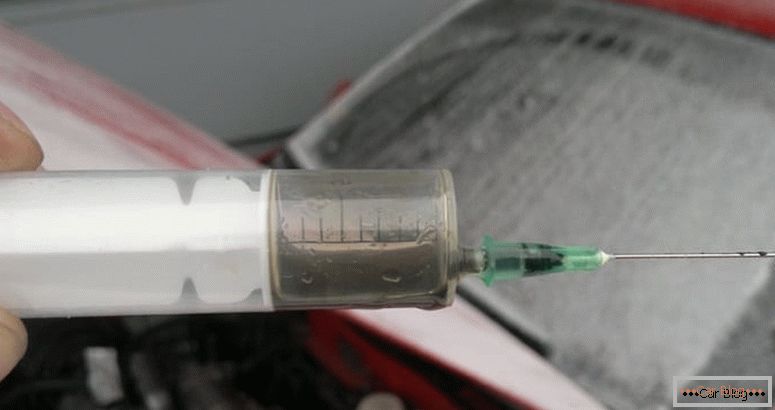
Remains of old brake fluid
Stages of work
Professionals use a special installation to replace the TJ, but at home you can do without it. The essence of the process is to drain the old substance from each brake caliper, through a special fitting, controlling that there is no air in the tank. Stages of the process:
- We are looking for a cylinder, where the brake fluid reservoir is located, and remove the cover from it.
- Using a syringe, pump out the old liquid in a plastic bottle.
- Up to the “max” mark we fill in the new TJ.
- Jack the car and remove the wheel.
- We remove the protective cap from the valve of the rear fitting.
- We put a transparent hose on the nozzle, the other end of it is placed in the bottle, where the old fluid is drained.
- Loosen the union nut with a key and quickly bring it to the opposite position. When the nut has soured and is not affected, it is necessary to knock it down and continue replacing.
- For the next step, an assistant is needed who takes the wheel and presses the brake several times and releases. 4–5 times will be enough, and the last time should be pressed all the way and not let go. At this time, the signal requires loosening the nut and returning it to its original position after a couple of seconds. Only then can the brake pedal be released.
- It is necessary to do these manipulations on each wheel 6–7 times; if there is patience, then it is better.
- Check for fluid when the level is under-maxed to the “max” mark, top up. At the end, push the pedal again and if it does not sag, then the replacement was successful.
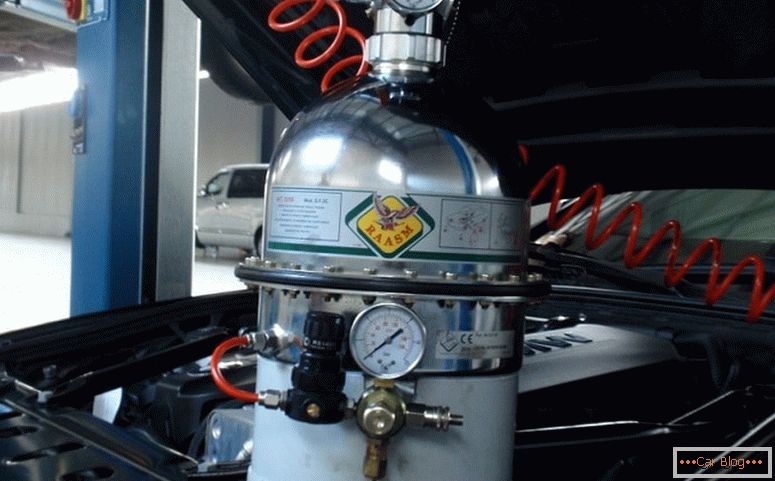
Replacement and pumping
Tips:
- note that during the operation the machine must be shut down, to be sure, remove the key from the ignition;
- Bleeding should start from the rear left wheel.then move to the right rear wheel, then left front and front right;
- pump over the first choke until all the old liquid is out. You can easily distinguish it from the new one - by color. Other fittings are pumped as usual;
- Make sure the tank is not empty, otherwise you will get some air. When bubbles are noticed when draining the used substance, swing until they disappear altogether.
Under what situations, experts recommend pumping the entire brake system of the car:
- over a large amount of time there is a violation of control (the car drives sharply in different directions);
- the substance was replaced not by a service, but independently, by an inexperienced driver;
- pressing the brake pedal feels that it is too soft;
- A recent repair of the vehicle's brake system has been carried out.
What kind of brake fluid to choose?
Keep in mind that the process of choosing a high-quality fluid is no less important than the process of replacing it. When buying a TJ, it is not recommended to save; you should purchase expensive products from the most well-known manufacturing companies.
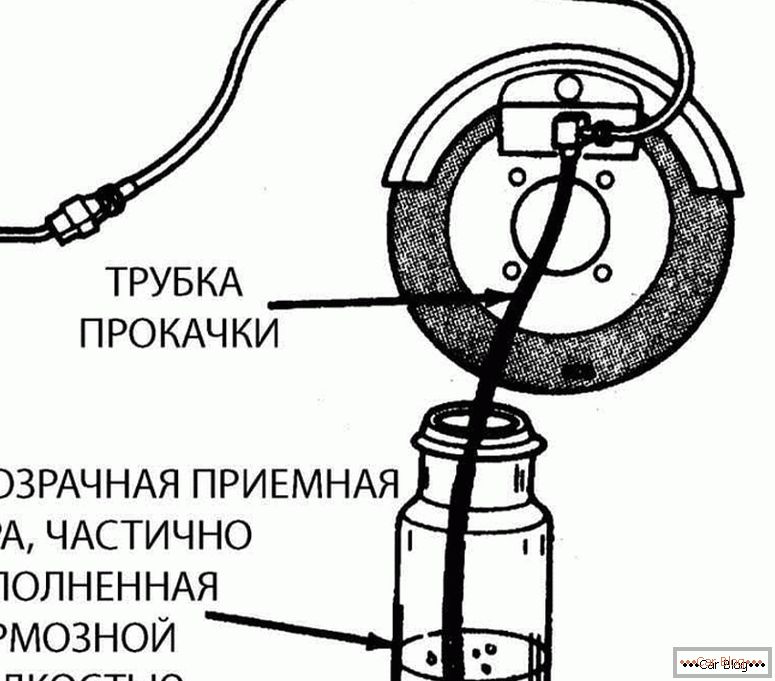
Flow chart
Requirements for brake fluid for cars:
- Indeed, high-quality brake fluid should have excellent lubricating properties.
- The liquid should consist of elements that do not affect the important components of the auto brake system.
- High-quality fluid should guarantee the correct operation of the hydraulic drive (the norm is from thirty degrees below zero, to fifty degrees above zero).

